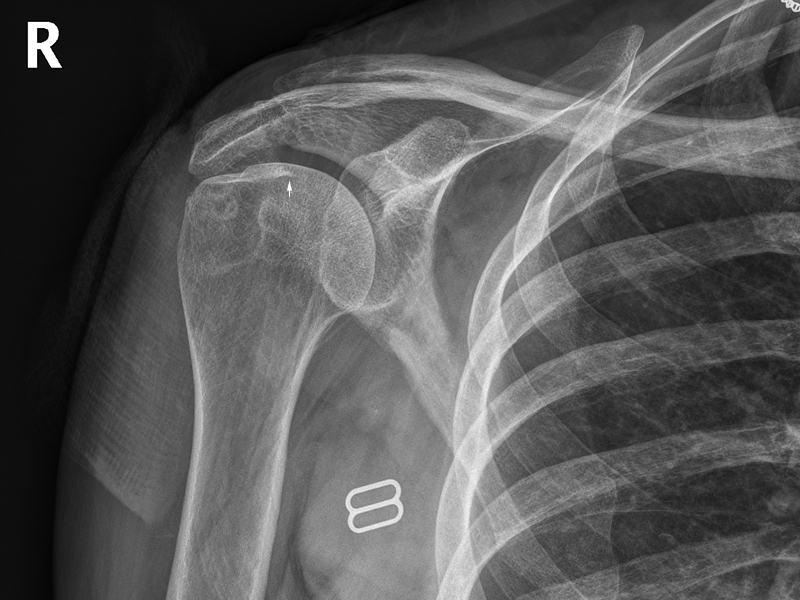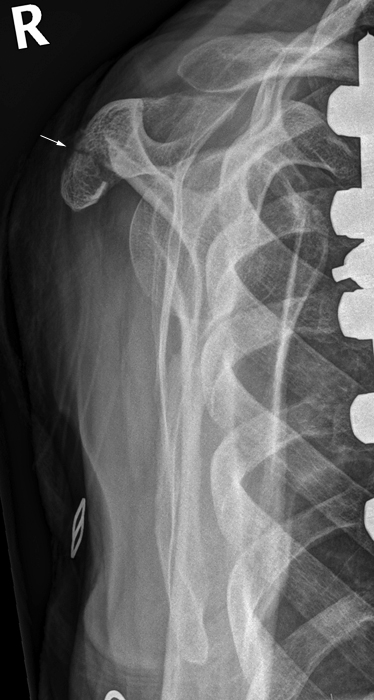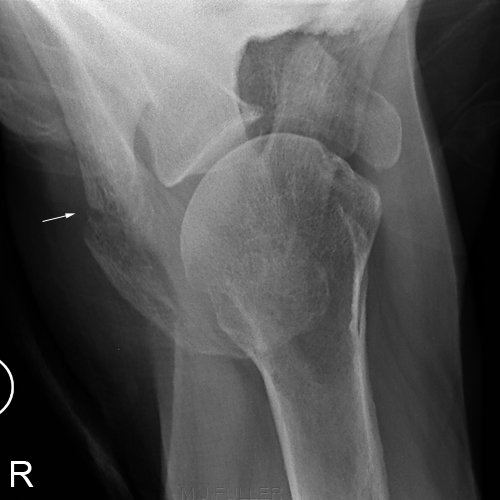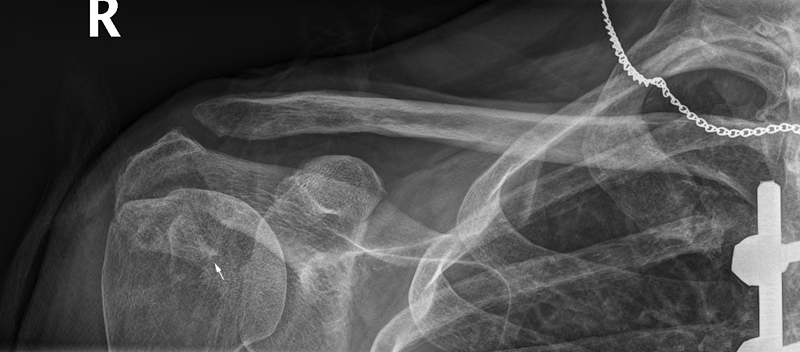Imaging Fractures of the Acromion
Jump to navigation
Jump to search
Introduction
Case 1Fractures of the scapula occur infrequently, with a fracture of the acromion being an even rarer entity. Acromial fractures constitute 9% of fractures of the scapula, which amounts to 3–5% of shoulder girdle injuries. Fractures of the acromion are generally secondary to trauma, with only a few cases of stress fracture having been reported. (<a class="external" href="http://ard.bmj.com/content/61/10/944.extract" rel="nofollow" target="_blank">N Roy, M G Smith, L G H Jacobs, Stress fracture of base of the acromion, Ann Rheum Dis 2002;61:944-945 doi:10.1136/ard.61.10.944</a>)



